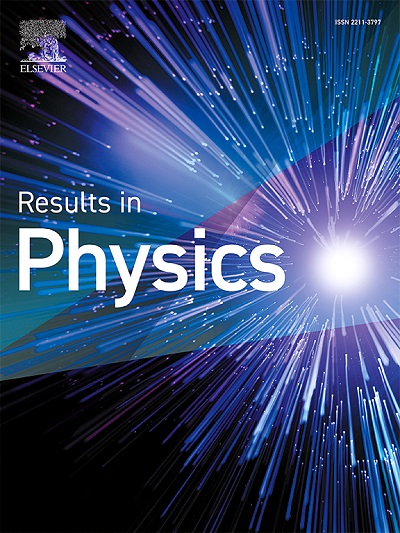Enhanced multiwavelength random fiber laser based on hybrid optical amplifier incorporating Sagnac loop mirror interferometer
IF 4.4
2区 物理与天体物理
Q2 MATERIALS SCIENCE, MULTIDISCIPLINARY
引用次数: 0
Abstract
This work presents an enhanced multiwavelength random fiber laser employing a hybrid optical amplifier in combination with high nonlinearity devices, achieved through the integration of a polarizer with highly nonlinear fiber (HNLF). A Sagnac loop mirror interferometer serves as the comb filtering device, while the hybrid optical amplifier comprises an erbium-doped fiber amplifier (EDFA) and a semiconductor optical amplifier (SOA) as gain media. The SOA’s role in the laser cavity is to mitigate mode competition caused by the homogeneous broadening of the EDFA. The multiwavelength performance is enhanced by introducing nonlinear polarization rotation effect through the interaction of the HNLF, SOA, and polarizer (Condition A). The optimal lasing spectrum features 52 lasing lines within a 3 dB uniformity range and a high extinction ratio (ER) of 20 dB. The multiwavelength bandwidth is 9.5 nm, which is broader compared to previous studies on MWRFLs utilizing a linear cavity configuration. Removing the polarizer (Condition B) reduces the number of lasing lines to 51 and the ER to 19 dB. Furthermore, excluding the HNLF (Condition C) from the linear cavity decreases the spectral flatness and lowers the number of lasing lines to 32. A decrease in EDFA power results in fewer lasing lines, and variations in the angle of polarization controller has changed the ER value. Laser stability was evaluated over 2 hours, showing a peak power fluctuation of approximately 4 dB.
基于Sagnac环镜干涉仪混合光放大器的增强型多波长随机光纤激光器
这项工作提出了一种增强型多波长随机光纤激光器,采用混合光放大器与高非线性器件相结合,通过高度非线性光纤(HNLF)的偏振器集成来实现。梳状滤波器件采用Sagnac环镜干涉仪,增益介质采用掺铒光纤放大器(EDFA)和半导体光放大器(SOA)。SOA在激光腔中的作用是减轻由EDFA均匀增宽引起的模式竞争。通过HNLF、SOA和偏振器(条件A)的相互作用,引入非线性偏振旋转效应,增强了多波长性能。最佳激光光谱在3db均匀范围内具有52条激光线,消光比(ER)高达20 dB。多波长带宽为9.5 nm,与以往使用线性腔结构的MWRFLs相比,带宽更宽。去除偏振器(条件B)将激光线的数量减少到51条,ER减少到19 dB。此外,从线性腔中排除HNLF(条件C)降低了光谱平整度,并将激光线数减少到32条。EDFA功率的降低导致激光线的减少,偏振控制器角度的变化改变了ER值。在2小时内对激光稳定性进行了评估,显示峰值功率波动约为4 dB。
本文章由计算机程序翻译,如有差异,请以英文原文为准。
求助全文
约1分钟内获得全文
求助全文
来源期刊

Results in Physics
MATERIALS SCIENCE, MULTIDISCIPLINARYPHYSIC-PHYSICS, MULTIDISCIPLINARY
CiteScore
8.70
自引率
9.40%
发文量
754
审稿时长
50 days
期刊介绍:
Results in Physics is an open access journal offering authors the opportunity to publish in all fundamental and interdisciplinary areas of physics, materials science, and applied physics. Papers of a theoretical, computational, and experimental nature are all welcome. Results in Physics accepts papers that are scientifically sound, technically correct and provide valuable new knowledge to the physics community. Topics such as three-dimensional flow and magnetohydrodynamics are not within the scope of Results in Physics.
Results in Physics welcomes three types of papers:
1. Full research papers
2. Microarticles: very short papers, no longer than two pages. They may consist of a single, but well-described piece of information, such as:
- Data and/or a plot plus a description
- Description of a new method or instrumentation
- Negative results
- Concept or design study
3. Letters to the Editor: Letters discussing a recent article published in Results in Physics are welcome. These are objective, constructive, or educational critiques of papers published in Results in Physics. Accepted letters will be sent to the author of the original paper for a response. Each letter and response is published together. Letters should be received within 8 weeks of the article''s publication. They should not exceed 750 words of text and 10 references.
 求助内容:
求助内容: 应助结果提醒方式:
应助结果提醒方式:


